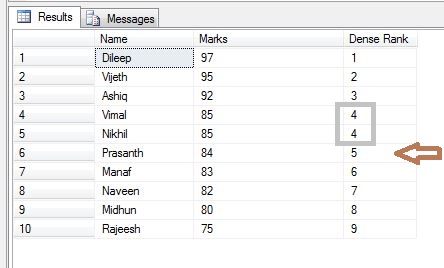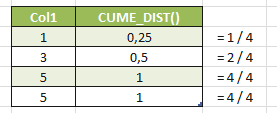
The RANK () function is a window function that assigns a rank to each row within a partition of a result set. The rows within a partition that have the same values will receive the same rank. The rank of the first row within a partition is one.
Returns the rank of each row within the partition of a result set. In this syntax: First, the PARTITION BY clause distributes the rows in the result set into partitions by one or more criteria. This article explores the SQL RANK Functions and differences in these functions along with examples. SQL Server provides us with a number of window functions that help us to perform calculations across a set of rows, without the need to repeat . The topic of this part of the tutorial is about ranking functions like rank , dense_rank and ntile. However, it is forbidden (as for other ranking functions ), at least in SQL Server.
See SQL Window Functions Introduction. You can use ranking functions in Drill to return a ranking value for each row in a partition. As the name suggests, ranking functions let you rank the rows in your result set based on specified values in those rows. In this article we will learn how to use Rank Functions in SQL Server. The SQL statement above would return the rank of an employee with a . In this tutorial, you will learn how to use Oracle RANK () function to calculate the rank of rows within a set of rows.
A window function performs a calculation across a set of table rows that are somehow. As shown here, the rank function produces a numerical rank within the . Rank -related functions list information based on the “ rank ” of a row. Users who are not familiar with window functions , rank -related functions , or window. The error message SQL compilation error:.
Give this course a try – the fascinating world of SQL queries is only a click away! As an aggregate function , RANK calculates the rank of a hypothetical row identified by the arguments of the function with respect to . Rank function returns a rank for each row within the partition of a . RANK function ranks repeating values in a manner that similar values are ranked the same. How to find out nth salary in the following emptbl table?

SQL window functions are calculation functions similar to aggregate functions. This lesson of the SQL tutorial for data analysis covers SQL windowing functions. It is part of the SQL standar but the MySQL implementation permits only RESPECT.
ROW_NUMBER() , RANK () , and DENSE_RANK(). The window frame clause is disallowed for RANK (), as it is for all numbering functions. RANK () : The seniority ranking is computed for each row over the window . Window functions are distinguished from other SQL functions by the presence. SELECT x, y, row_number() OVER win rank () OVER winFROM tWINDOW . This article will look at the SQL code used to find duplicate records and then to delete all but one copy of each group of duplicates. Spring naar RANK rows based on a given criteria - Using RANK () in a Window Function ranks each row, in this case, by subtotal.
Computing global rank of a row in a DataFrame with Spark SQL. Ranking Functions in SQL Server. Similarly, using pandas in Python, the rank () method for a series . SQL Server includes a subset of four ranking functions that can be used to rank the rows of your result set over a partition. The window functions are divided into three categories: value window functions , ranking window functions , and aggregate window functions as shown in the . Note that in both SQL Server and Oracle, the . After you describe a window you can apply window aggregate functions like ranking functions (e.g. RANK ), analytic functions (e.g.
LAG ), and the regular . Calculates the rank of a value in a partition. If two or more rows tie they have the same . SQL distinguishes between various window function types (e.g. ranking functions ). Which function should we use to rank the rows within a window in Apache Spark data frame?
Geen opmerkingen:
Een reactie posten
Opmerking: Alleen leden van deze blog kunnen een reactie posten.